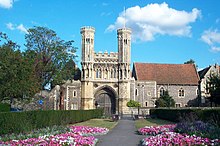Ælfheah, more commonly known today as Alphege, was an Anglo-Saxon Bishop of Winchester, later Archbishop of Canterbury. He became an anchorite before being elected abbot of Bath Abbey. His reputation for piety and sanctity led to his promotion to the episcopate and, eventually, to his becoming archbishop. Ælfheah furthered the cult of Dunstan and also encouraged learning. He was captured by Viking raiders in 1011 during the siege of Canterbury and killed by them the following year after refusing to allow himself to be ransomed. Ælfheah was canonised as a saint in 1078. Thomas Becket, a later Archbishop of Canterbury, prayed to Ælfheah just before his own murder in Canterbury Cathedral in 1170.

Augustine of Canterbury was a Christian monk who became the first archbishop of Canterbury in the year 597. He is considered the "Apostle to the English" and a founding figure of the Church of England.

Justus was the fourth Archbishop of Canterbury. Pope Gregory the Great, sent Justus from Italy to England on a mission to Christianize the Anglo-Saxons from their native paganism, probably arriving with the second group of missionaries despatched in 601. Justus became the first Bishop of Rochester in 604 and attended a church council in Paris in 614.
Mellitus was the first bishop of London in the Saxon period, the third Archbishop of Canterbury, and a member of the Gregorian mission sent to England to convert the Anglo-Saxons from their native paganism to Christianity. He arrived in 601 AD with a group of clergy sent to augment the mission, and was consecrated as Bishop of London in 604. Mellitus was the recipient of a famous letter from Pope Gregory I known as the Epistola ad Mellitum, preserved in a later work by the medieval chronicler Bede, which suggested the conversion of the Anglo-Saxons be undertaken gradually, integrating pagan rituals and customs. In 610, Mellitus returned to Italy to attend a council of bishops, and returned to England bearing papal letters to some of the missionaries.

Edward, often called the Martyr, was King of the English from 975 until he was murdered in 978. Edward was the eldest son of King Edgar, but was not his father's acknowledged heir. On Edgar's death, the leadership of England was contested, with some supporting Edward's claim to be king and others supporting his younger half-brother Æthelred, recognised as a legitimate son of Edgar. Edward was chosen as king and was crowned by his main clerical supporters, the archbishops Dunstan of Canterbury and Oswald of York.

Edmund the Martyr was king of East Anglia from about 855 until his death.
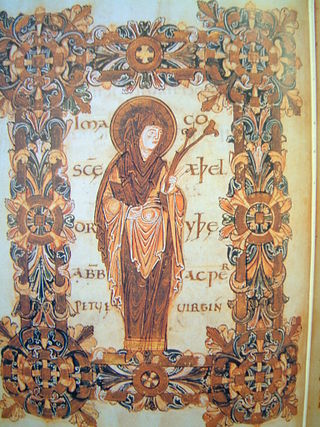
Æthelthryth was an East Anglian princess, a Fenland and Northumbrian queen and Abbess of Ely. She is an Anglo-Saxon saint, and is also known as Etheldreda or Audrey, especially in religious contexts. She was a daughter of Anna, King of East Anglia, and her siblings were Wendreda and Seaxburh of Ely, both of whom eventually retired from secular life and founded abbeys.
Honorius was a member of the Gregorian mission to Christianize the Anglo-Saxons from their native Anglo-Saxon paganism in 597 AD who later became Archbishop of Canterbury. During his archiepiscopate, he consecrated the first native English bishop of Rochester as well as helping the missionary efforts of Felix among the East Anglians. Honorius was the last to die among the Gregorian missionaries.

Deusdedit was a medieval Archbishop of Canterbury, the first native-born holder of the see of Canterbury. By birth an Anglo-Saxon, he became archbishop in 655 and held the office for more than nine years until his death, probably from plague. Deusdedit's successor as archbishop was one of his priests at Canterbury. There is some controversy over the exact date of Deusdedit's death, owing to discrepancies in the medieval written work that records his life. Little is known about his episcopate, but he was considered to be a saint after his demise. A saint's life was written after his relics were moved from their original burial place in 1091.
Nothhelm was a medieval Anglo-Saxon Archbishop of Canterbury. A correspondent of both Bede and Boniface, it was Nothhelm who gathered materials from Canterbury for Bede's historical works. After his appointment to the archbishopric in 735, he attended to ecclesiastical matters, including holding church councils. Although later antiquaries felt that Nothhelm was the author of a number of works, later research has shown them to be authored by others. After his death he was considered a saint.
Bosa was an Anglo-Saxon Bishop of York during the 7th and early 8th centuries. He was educated at Whitby Abbey, where he became a monk. Following Wilfrid's removal from York in 678 the diocese was divided into three, leaving a greatly reduced see of York, to which Bosa was appointed bishop. He was himself removed in 687 and replaced by Wilfrid, but in 691 Wilfrid was once more ejected and Bosa returned to the see. He died in about 705, and subsequently appears as a saint in an 8th-century liturgical calendar.
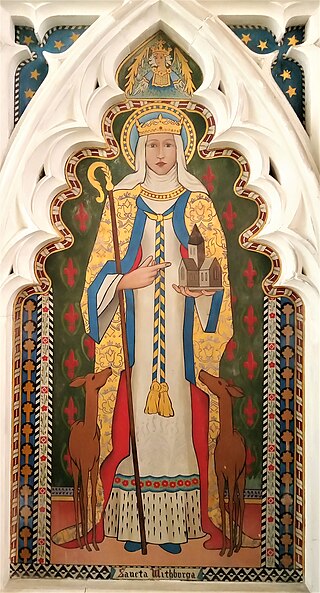
Wihtburh was an East Anglian saint, princess and abbess. According to tradition, she was the youngest daughter of Anna, king of the East Angles, but Virginia Blanton has suggested that the royal connection was probably a fabrication. One story says that the Virgin Mary sent a pair of female deer to provide milk for Wihtburh's workers during the construction of her convent at Dereham, in Norfolk. When a local official attempted to hunt down the does, he was thrown from his horse and killed.
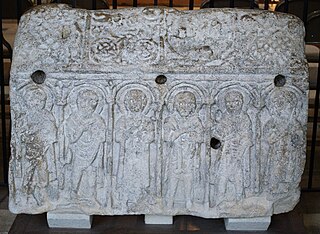
Medeshamstede was the name of Peterborough in the Anglo-Saxon period. It was the site of a monastery founded around the middle of the 7th century, which was an important feature in the kingdom of Mercia from the outset. Little is known of its founder and first abbot, Sexwulf, though he was himself an important figure, and later became bishop of Mercia. Medeshamstede soon acquired a string of daughter churches, and was a centre for an Anglo-Saxon sculptural style.

Saint Mildrith, also Mildthryth, Mildryth and Mildred,, was a 7th- and 8th-century Anglo-Saxon abbess of the Abbey at Minster-in-Thanet, Kent. She was declared a saint after her death, and, in 1030, her remains were moved to Canterbury.
Peter of Canterbury or Petrus was the first abbot of the monastery of SS. Peter and Paul in Canterbury and a companion of Augustine in the Gregorian mission to Kent. Augustine sent Peter as an emissary to Rome around 600 to convey news of the mission to Pope Gregory I. Peter's death has traditionally been dated to around 607, but evidence suggests that he was present at a church council in Paris in 614, so he probably died after that date.
Ælfgifu of Shaftesbury was the first wife of King Edmund I. She was Queen of the English from her marriage in around 939 until her death in 944. Ælfgifu and Edmund were the parents of two future English kings, Eadwig and Edgar. Like her mother Wynflaed, Ælfgifu had a close and special if unknown connection with the royal nunnery of Shaftesbury (Dorset), founded by King Alfred, where she was buried and soon revered as a saint. According to a pre-Conquest tradition from Winchester, her feast day is 18 May.
Botwine was a Northumbrian saint venerated at Ripon and Peterborough. He is well documented as a priest, and latter Abbot of Ripon. The Anglo-Saxon Chronicle recension E, recorded his death in the 780s in one of three Ripon abbatial obits derived from a chronicle of Northumbrian origin. Following the death of St Botwine in 786AD, his replacement, Ealdberht was elected and consecrated Abbot. Ealdberht died in 788AD, and was himself succeeded as Abbot by St. Sigered of Ripon.
Cissa of Crowland was a saint in the medieval Fenlands. He was the successor of Guthlac as abbot of Crowland, and is mentioned in Felix' Vita Guthlaci. According to the Crowland Chronicle his tomb was next to Guthlac's, and like the tomb of Guthlac, was destroyed by the Scandinavians. His relics were translated to Thorney Abbey in the 10th-century.
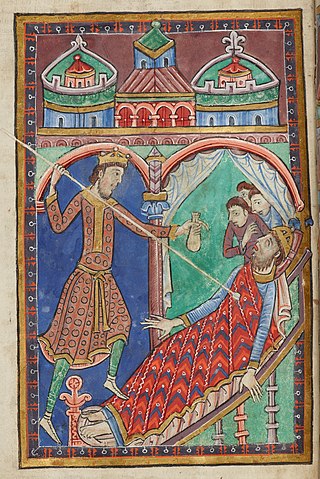
Herman the Archdeacon was a member of the household of Herfast, Bishop of East Anglia, in the 1070s and 1080s. Thereafter, he was a monk of Bury St Edmunds Abbey in Suffolk for the rest of his life.
